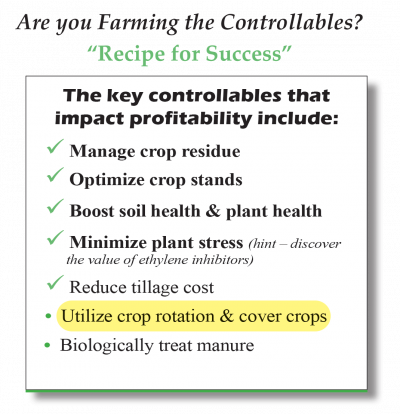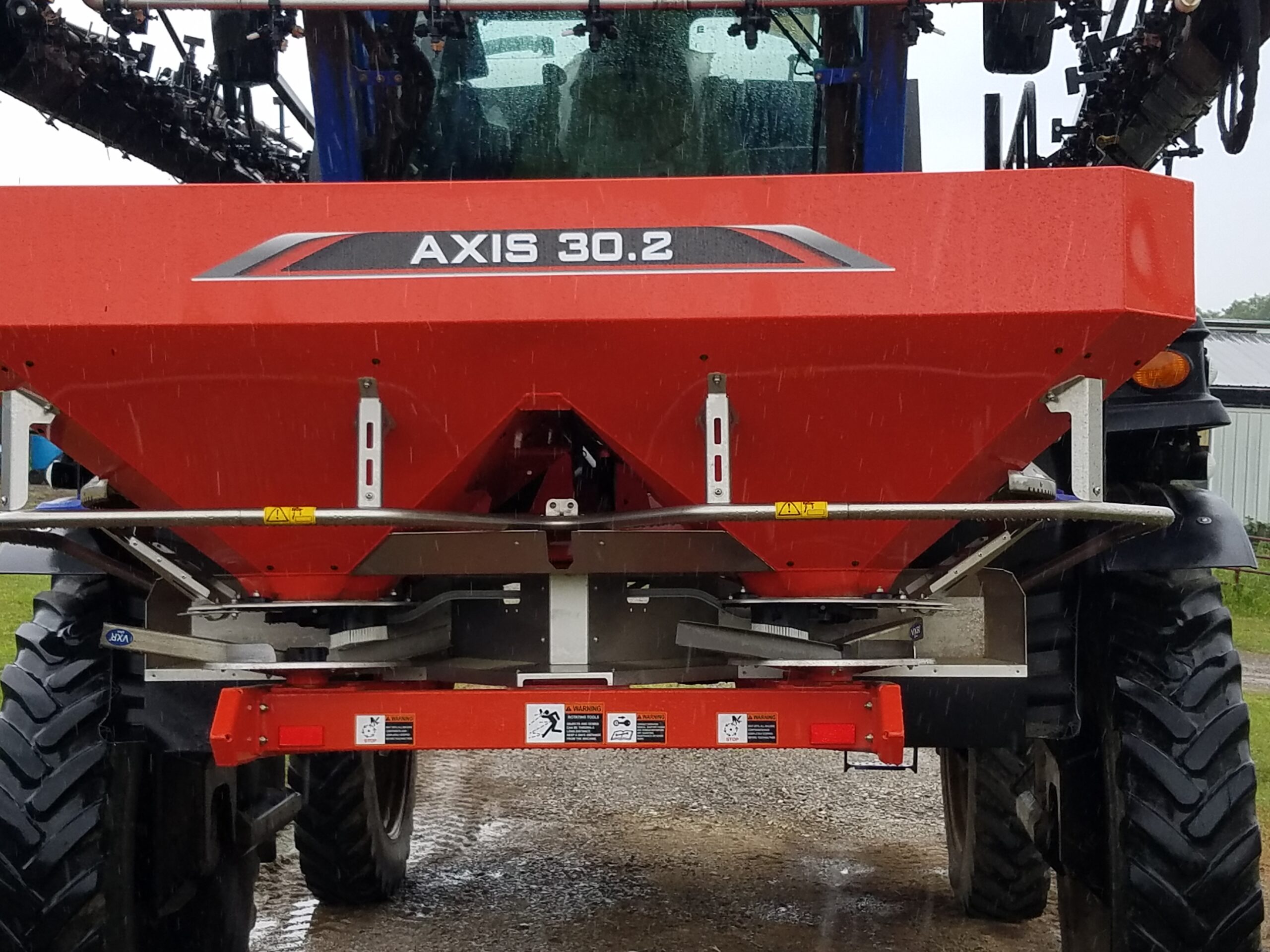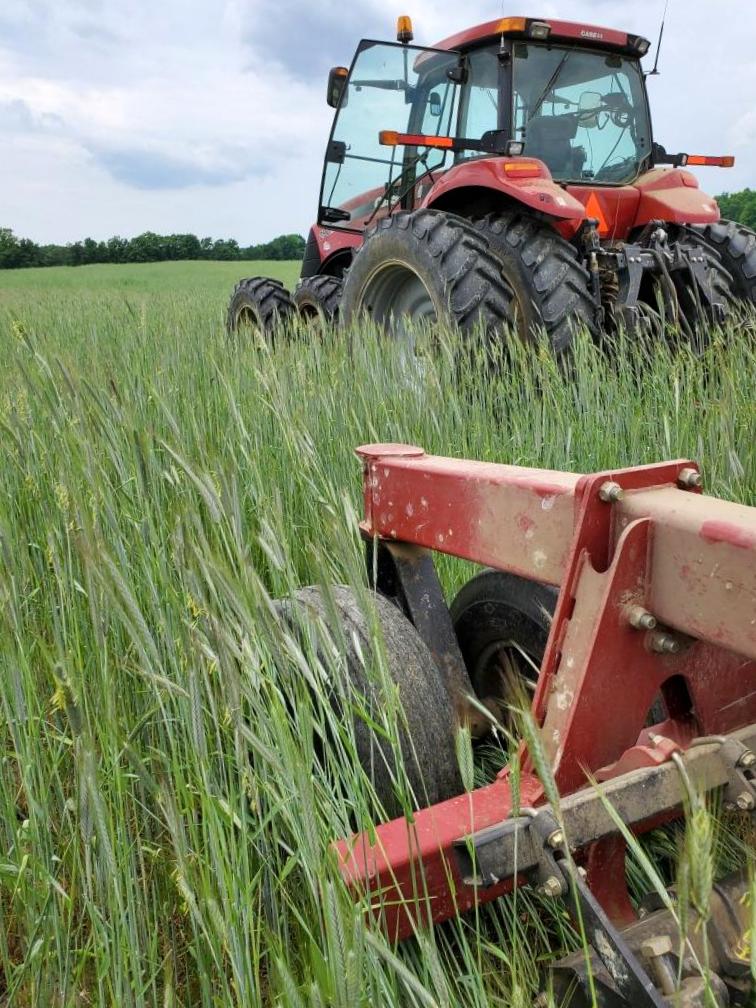Utilize Crop Rotation & Cover Crops

Grow Your Own Fertilizer and Weed Control: Follow Three Simple Steps for Cover Crop Success
Being a farmer means shaking hands with nature. Sometimes it feels more like a slap in the face, though. John Urbanick thinks back to 2021, when rainstorms drenched his farm in northwest Pennsylvania.
“We set the record for rainfall that month” said Urbanick, whose farm raises food-grade beans and rye in the Erie, Pennsylvania, area.
Knowing what challenges Mother Nature unleashes, tough weeds still seem to thrive. “We’ve had an awful time with ragweed,” said Urbanick, who has farmed for more than 40 years. “The ragweeds were so bad some years that you couldn’t see the soybeans.”
Fortunately, Urbanick and his brother, Joe, began seeding cover crops on their 1,200 acre farm about 10 years ago. “The ProfitProAG team encouraged us to use cover crops from day one,” John Urbanick said. “They stressed how you need to focus on soil health and build organic matter.”
The Urbanick brothers followed this advice. Today, they seed cover crops on a majority of their acres and continue to fine-tune their cover crop strategy. “We’ve seen so many benefits from cover crops,” Urbanick said. “They improve water infiltration in the soil, which helps control washouts and runoff, even when it rains hard.”
Cover crops also help stop weeds, Urbanick added. “When we were talking about spraying weeds a third time on rye in one growing season, I knew we were overusing glyphosate. Cover crops have helped a lot with weed control and have cut our ragweed problem
in half.”
In addition, the cereal rye in the “super scavenger” cover crop mix the brothers use provides a valuable carbon source. It also pulls in valuable nitrogen from the soil. “We’re trying to grow our own nitrogen,” Urbanick explained. “It’s so satisfying to drive by our fields, see the cover crops out there and know we’re getting so many benefits.”
Three Simple Steps to Cover Crop Success
It’s no secret that cover crops can build soil organic matter, reduce runoff, control erosion, boost drought resilience, control weeds, cut crop input costs and more. But maybe you’ve experienced a cover crop failure,
or you just don’t want the hassle of messing with cover crops.
These challenges usually arise when cover crops are treated as an afterthought. “Sometimes farmers think, ‘If we get everything else done at harvest, then we’ll focus on cover crops,’” said Dennis Klockenga, a crops specialist with ProfitProAG.
This approach often leads to cover crop failure, however. “A common mistake I see is that growers have no plan for cover crop success,” Klockenga said. “You need to treat them like a real crop. Even though they aren’t a cash crop, you’ll get tremendous benefits.”
ProfitProAG offers these proven practices for cover crop success:
- Simplify seeding. Consider placing a seeder box on your tillage implement. “If you do fall tillage, you can seed cover crops in the same pass, and you’ll get good seed-to-soil contact,” Klockenga said. This has become a common practice in states like Illinois. Cereal rye is the only cover crop that will work with this system, so try this ahead of soybeans. Seed 60 pounds of cereal rye per acre on corn acres that will be planted to soybeans. You can experiment with more diverse seed mixes and various seeding options as you gain experience. The Urbanicks seed about one third of their acres with an 11-way mix, including radishes, clover, oats, pearl millet, barley, cereal rye and more, seeded at 35 pounds per acre. Planting a mix can increase biodiversity on the farm while guarding against weather extremes, since different species will thrive in different weather conditions. “Cover crops provide a big return on investment,” Urbanick said.
- Plant “green when ready.” Don’t feel like you have to plant your cash crop into living cover crops in the spring. “Planting green is great, but you don’t need to make this your goal when you’re just starting out with cover crops,” Klockenga said. “Just terminate the cover crop as soon as the weather is warm enough.” As you gain more experience, expand your cover-crop management skills. “It’s exciting to plant green,” Urbanick said.
- Find a mentor. When cover crops fail, it’s typically because farmers haven’t worked with someone who can help them learn. Urbanick appreciates ProfitProAG advisors like Klockenga. He also works with the local Natural Resources Conservation Service (NRCS) office and speaks often with Ohio farmer Dave Brandt, a nationally recognized cover crop expert who has grown cover crops for more than 40 years. “When you follow good advice, you can accomplish what you’re trying to do with cover crops,” Urbanick said. “That’s comforting.”
Approaching cover crop management methodically is the key to long-term success. “We’ve seen that growers who succeed with cover crops don’t stop using them,” Klockenga said.
Cover crops are a key part of ProfitProAG’s “Recipe for Success,” a simple, sustainable, customized system for enhancing soil health, boosting plant health and improving farm profitability. Urbanick appreciates this holistic system, which produces healthy soils and healthy crops. “The ProfitProAG team knows their stuff, and their advice pays off. Cover crops work so well for us that we’re not going to quit. They’ve become one of our top priorities.”

Cover Crop Spreader

